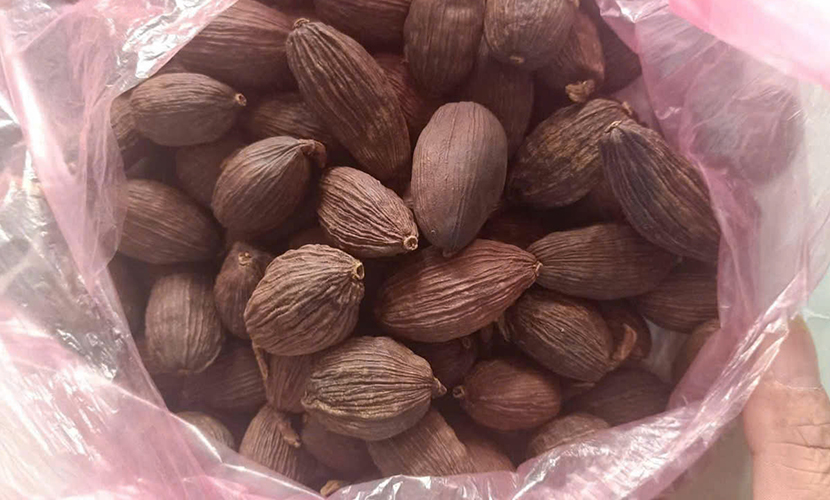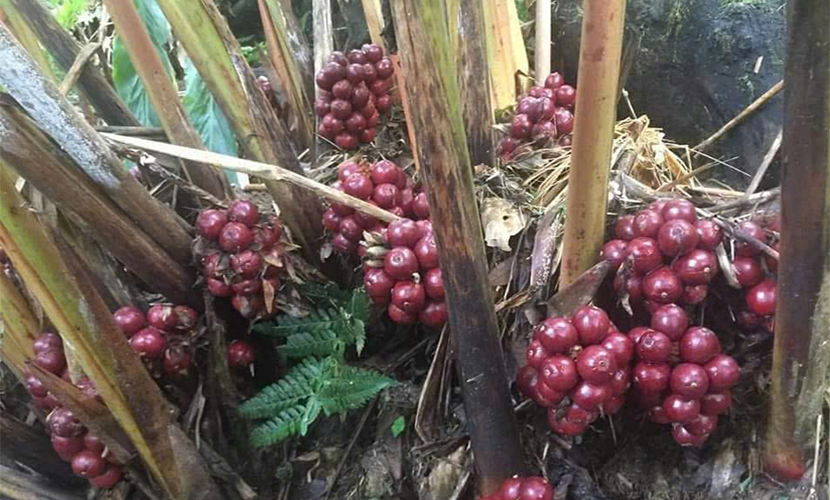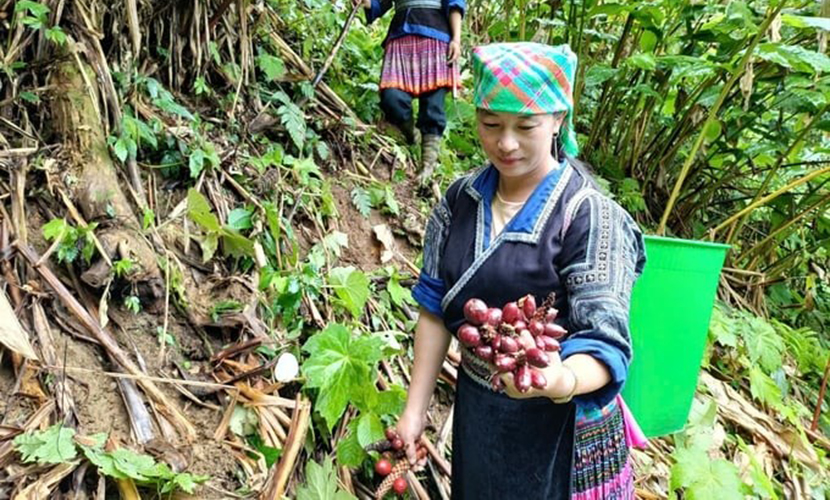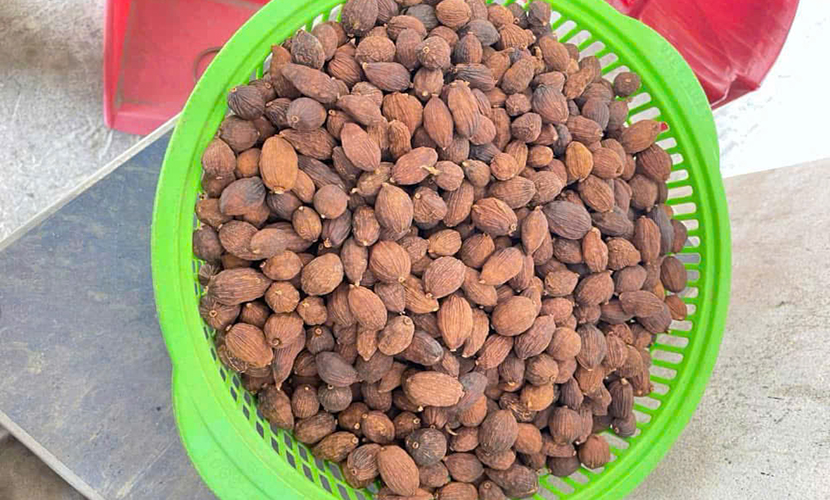
Vietnamese cardamom, known as the “treasure beneath the forest canopy” in Vietnam’s northern mountainous region, was once an economic and environmental burden. This was largely because of outdated farming methods.
However, scientific intervention and cooperative models have changed this situation. With support from the Vietnam Cooperative Alliance, thousands of households have adopted these improved methods. Consequently, they have found a sustainable path out of poverty through this crop.

Vietnamese cardamom
The northern mountains of Vietnam, with their ideal subtropical climate and vast ancient forests, are home to many valuable medicinal plants. Among them, Vietnamese cardamom (Amomum tsaoko) stands out. This plant is a renowned spice essential in traditional cuisine. It also serves as a medicinal herb with high economic value.
For a long time, cardamom has sustained thousands of ethnic minority households in border provinces, such as Lai Chau, Lao Cai, and Tuyen Quang. For some families, it is their only source of income. After harvest, Vietnamese cardamom is mainly exported to major markets like China and India.
Thus, it brings significant non-timber forest product value to the country. Each hectare of Vietnam’s cardamom can generate an income of 40–50 million VND per year. Consequently, many ethnic minority households gain a stable livelihood and escape poverty.
The expansion of Vietnamese cardamom cultivation in recent years has demonstrated the immense potential of this crop. It contributes significantly to poverty reduction in regions with high poverty rates.
However, behind the growth in cultivation area lie serious challenges, mainly because of traditional, rudimentary farming and processing methods. This has inadvertently turned the “treasure under the forest canopy” into a burden. It hinders sustainable economic development and directly threatens the forest ecosystem.
Currently, cardamom cultivation in many mountainous localities relies on traditional extensive methods. These not only result in low yields but also cause unpredictable environmental consequences. Survey data from the Vietnam Cooperative Alliance has revealed significant gaps in the production process.

Fresh cardamom from Vietnam
Economically, the losses are clear and long-lasting. Farmers often harvest immature fruits or do so improperly, which reduces yields by 20–30%. Also, the processing stage, particularly drying, remains largely manual and rudimentary.
In addition, outdated drying techniques lead to poor-quality products. Fruits are small, dark, uneven, prone to mold, and have a short shelf life. As a result, the selling price of processed cardamom drops by 10–15%, directly affecting local household income.
“If we keep drying with firewood as before, we have to stay up all night tending the stove. We also travel farther to collect wood. Yet the money from selling cardamom barely covers the effort. More importantly, as the forest thins, we worry when floods and landslides come,” shared Vang A Pao, a member of a cardamom cooperative in Lai Chau.
This confession reflects a deeper concern: the negative impact on the environment and forest resources. On average, producing 1 ton of dried cardamom requires 5–7 m³ of firewood. Therefore, cutting trees and collecting wood for drying is prolonged, fuel-intensive, and costly. It is a major cause of deforestation.
Planting cardamom under forest canopies without proper techniques also severely affects forest structure and regeneration. Consequently, the forest’s protective functions gradually decline. This degradation threatens biodiversity and increases the risk of landslides, flash floods, and debris flows, particularly in northern border provinces.

Harvesting Vietnamese cardamom
Given this situation, the development of Vietnamese cardamom must go hand in hand with sustainable forest protection and management. This urgent issue requires scientific and technological interventions as well as professional organization, such as from the Vietnam Cooperative Alliance.
Recognizing the urgency of the economic-environmental dilemma, the Vietnam Cooperative Alliance has led a key project. It applies science and technology to improve the care, processing, and storage of cardamom.
The project also transfers production technology to cooperatives in northern mountainous regions. The core goal is to enhance technological capacity and production skills. In doing so, it creates high-quality cardamom that meet international market requirements.
The Vietnam Cooperative Alliance connects science with practical production. The Institute of ST&E not only conducts research but also implements pilot programs and technology transfer locally. This collaborative model ensures scientific knowledge reaches the entities most in need. Cooperatives, as collective economic organizations, bring together large numbers of local farmers.
The project has piloted technology transfer at two cooperatives in Lai Chau Province. This region has high poverty and extensive forests needing protection. These cooperatives were pioneers in receiving new drying and cultivation technology.
Instead of using traditional firewood dryers that cause pollution and waste resources, cooperatives were supported with advanced drying systems. These include electric dryers or combined biomass/solar dryers, depending on local infrastructure.

Processing Vietnamese cardamom
The new technology significantly reduced firewood consumption by 5–7 m³ per ton. It also lowered operating and labor costs. Most importantly, it allowed precise control of temperature and drying time. As a result, processing time shortened, and high-quality output was ensured.
The dried cardamom now meets higher standards in color, size, and shelf life. Products are bright red, uniform, and burn-free. Consequently, this satisfies stringent export market requirements. Improved product quality has increased the selling price by 10–15%, providing stable income for cooperative members.
The Institute of ST&E also focuses on sustainable cultivation techniques. Cooperatives were guided on proper under-canopy planting and maintaining appropriate density. They also learned to apply organic fertilizers and manage pests organically, replacing outdated extensive farming.
This approach ensures healthy cardamom growth without damaging regenerating trees. It contributes to forest structure, biodiversity, and protective functions. Therefore, the shift from deforestation-based farming to forest-friendly cultivation has been welcomed by locals. They understand the forest is their most valuable asset, intimately linked to long-term livelihoods.
The sustainable cardamom development model, through cooperatives and science and technology, has proven its scientific, economic, social, and environmental value. It addresses both economic development and national security challenges in border areas. Moreover, practical success extends beyond economic improvement to broader benefits.
Firstly, Vietnamese cardamom has become a key crop in sustainable poverty reduction strategies. Cultivation under a commodity-linked model, with cooperatives as the driving force, stabilizes production and generates significant income. Communities earn directly on their land while preserving traditional cultural and farming practices.

Dried cardamom from Vietnam
Cooperatives provide technical support and act as market intermediaries. They help members sell products at better prices and avoid exploitation by middlemen. Economic stability motivates locals to remain committed to their communities.
Socially and in terms of security, improving living standards through sustainable cardamom development is crucial. Northern mountainous areas are the nation’s “frontline.” Securing public support and local economic development provides a solid foundation.
When livelihoods are ensured, people are less likely to engage in illegal activities or migrate uncontrolled. They are more likely to actively participate in self-governing organizations, forest protection, and border security alongside the military.
This model is praised as a comprehensive solution for under-canopy medicinal crops. To replicate its success, the Institute of ST&E has organized workshops and technology transfer programs. Neighboring cooperatives and provinces like Cao Bang and Lang Son benefit.
The goal is to fully shift from extensive farming to controlled intensive cultivation. Cardamom production and business management are linked with sustainable forest protection and development.
Professional support from the Vietnam Cooperative Alliance has created a historic turning point. By combining scientific knowledge with collective economic models, the program helps thousands of northern mountainous households escape poverty. It opens a greener, more prosperous, and safer future. In this way, national borderlands are transforming into strong, self-reliant economic zones.
Vietnamese source: https://baolaocai.vn/con-duong-thoat-ngheo-tu-cay-thao-qua-post885543.html
